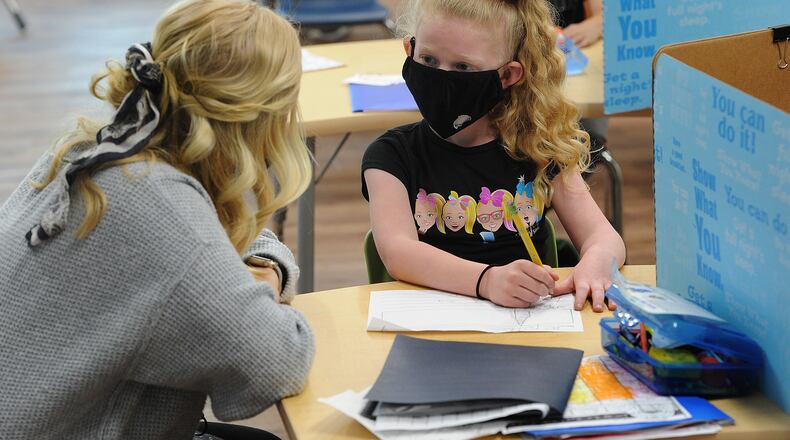Those are larger first-year increases than in the House plan, where most local school districts would see state funding increases of 0.1 to 3% in the first year. The House plan calls for significant funding increases phased in over six years.
In the Senate plan, state aid to charter schools would rise 5.6% on a per-pupil basis the first year, followed by a 0.6% increase the second year.
But for both districts and charters, those increases are not uniform to all schools.
Local school impact
The Senate plan shows state aid for the Vandalia-Butler and Kettering school districts rising by 13% to 17% in 2021-22, followed by another 8.8% increase the next year. On the other hand, state funding for Dayton and Eaton schools would rise by less than 0.6% each of the two budget years.
Every local school district would see at least some increase in state funding over the next two years. Jefferson Twp., Tipp City, Fairborn, Oakwood and Springboro would be among the districts with larger increases of at least 5% both years.
Among local charter schools, some of the largest increases would go to Summit Academy of Dayton (the only increase over 10%) and to a few dropout recovery high schools — Dayton Business Tech, Urban Early College Network and Gem City Career Prep.
Thousands of local students attend private schools via state-paid EdChoice vouchers. The Senate budget plan would increase the value of those vouchers from the current $4,650 to $5,500 for kindergarten through eighth grade (an 18% increase), and from $6,000 to $7,500 for high schools (a 25% increase).
“These changes dramatically expand the funding provided to chartered nonpublic schools without any accountability for these public funds or the performance of the children these funds are provided to serve,” argued Ohio School Boards Association Director of Legislative Services Jennifer Hogue.
School choice backers disagreed. Chad Aldis, vice president for Ohio Policy at the Fordham Institute, said the Senate’s voucher increases and loosening of charter school startup rules “will empower Ohio families with quality educational options.”
House vs. Senate
OSBA and some other statewide education groups have urged the Senate to change course and adopt the Fair School Funding Plan that was overwhelmingly approved by the House.
That formula calculates the cost of teachers, busing, special education and other factors to determine a “base cost” to educate students. It uses that figure to calculate state funding for each school district. The House Plan has a six-year phase-in that worried some senators, who believed the cost of the formula would skyrocket in later years.
But the Senate is likely to approve some version of its own school funding and budget plan this week, meaning a conference committee would then have to hash out the differences between the House and Senate plans by the end of June.
Katie Johnson, deputy executive director of the Ohio Association of School Business Officials, urged the Senate to use a sliding scale of each community’s income and property wealth to determine school funding, as the House plan does. She also called for increased funding for economically disadvantaged students, plus studies to determine the true cost of educating at-risk students.
“On behalf of our members, we reiterate our support of the Fair School Funding Plan,” Johnson said. “This plan was developed by a group of practitioners who worked collaboratively with all stakeholders over a three-year period.”
The Senate plan would increase “base aid” state spending for schools the next two years, but there would be cuts in some specialty areas. Busing funding would fall by about $250 million those two years.
Republican Senators Matt Huffman and Matt Dolan said their plan is more predictable and will allow a review after two years as costs go up, again citing concerns about the long-term impact of the House bill.
“It is a sustainable plan, which means we can pay for this plan and the school districts can rely on it,” Dolan said.
About the Author

